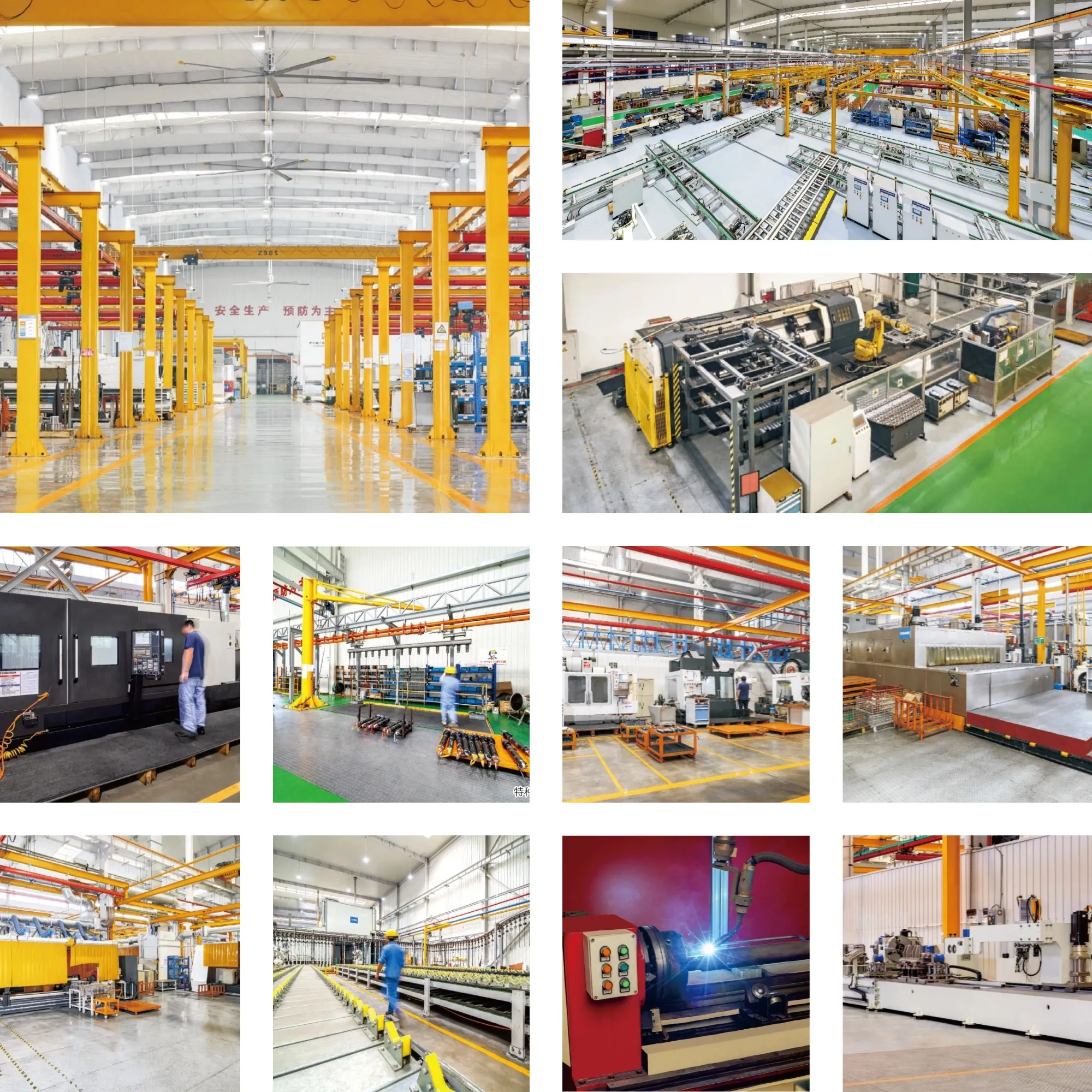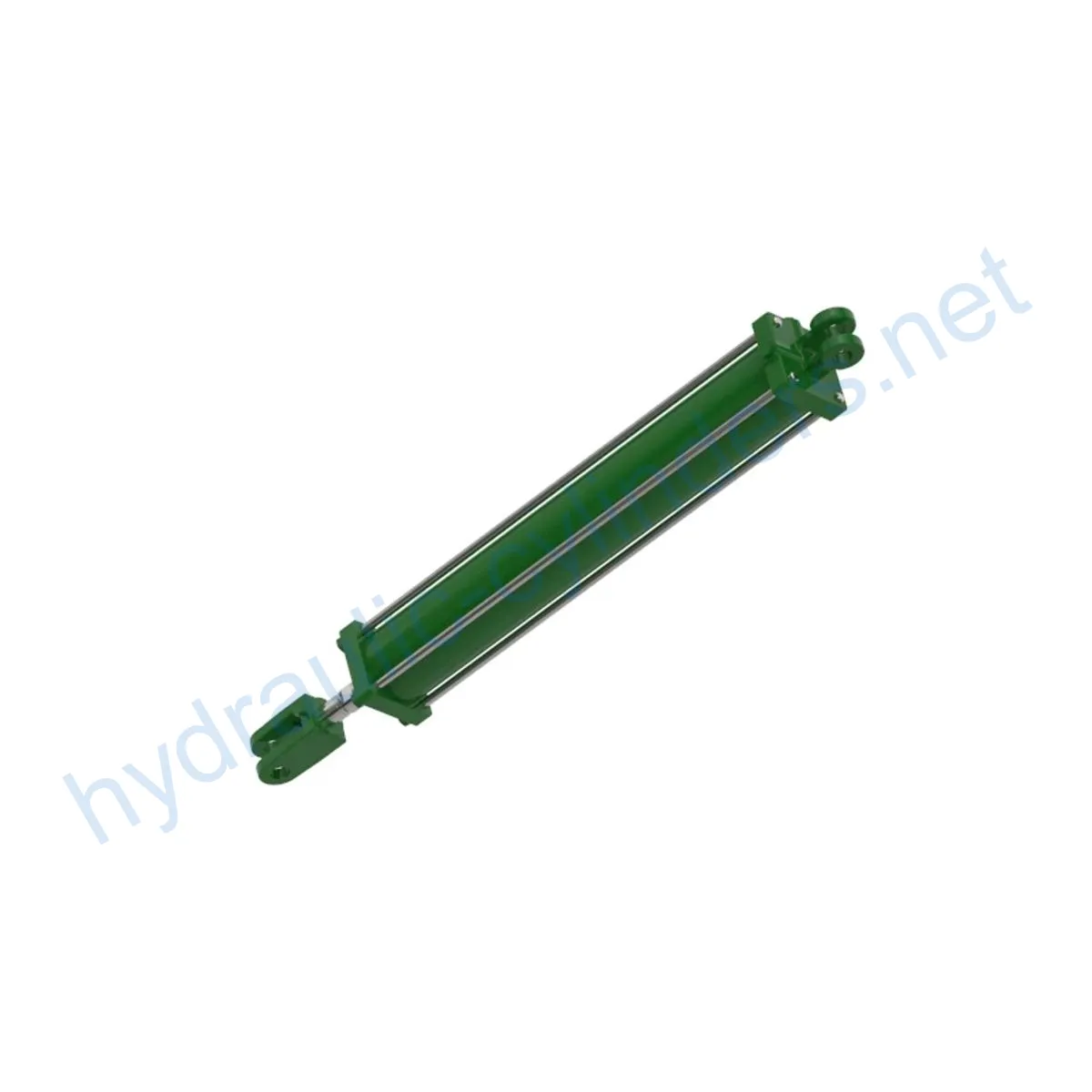Replacement Of AHC13967 Wing Fold Hydraulic Cylinder
Som en av produsentene, leverandørene og eksportørene av mekaniske produkter tilbyr vi hydrauliske sylindere og mange andre produkter.
Ta kontakt med oss for mer informasjon.
Post:sales@hydraulic-cylinders.net
Produsent, leverandør og eksportør av hydrauliske sylindere.
Introduction
The Replacement Of AHC13967 Wing Fold Hydraulic Cylinder is a hydraulic cylinder that is used in various equipment models, including 610, 680, 726, 730, 735, 960, 1690, 1810, 1820, 1840, 1860, 1890, 1895, 1990, 2200, 2400, N530, N530C, N536, N536C, N540, N540C, and N542C. This hydraulic cylinder weighs 101.41 lb and has dimensions of 7 in (height) x 7.7 in (width) x 53.4 in (length). Its primary function is to provide the necessary force to operate various heavy equipment.
Specifications and Models
The Replacement Of AHC13967 Wing Fold Hydraulic Cylinder has a weight of 101.41 lb and dimensions of 7 in (height) x 7.7 in (width) x 53.4 in (length). It is compatible with various equipment models, including 610, 680, 726, 730, 735, 960, 1690, 1810, 1820, 1840, 1860, 1890, 1895, 1990, 2200, 2400, N530, N530C, N536, N536C, N540, N540C, and N542C.
Features
Improved Equipment Performance
Replacing damaged or worn hydraulic cylinders can help restore the equipment’s normal operation and ensure its performance in various applications.
Enhanced Safety
Regularly replacing hydraulic cylinders can reduce safety hazards caused by cylinder failure and ensure the safety of operators and equipment.
Overload Protection
New cylinder designs typically incorporate better overload protection mechanisms, improving safety.
Quick Installation
Modern hydraulic cylinders are designed to be easy to install and replace, reducing downtime.
Standardized Components
Many hydraulic cylinders are standardized products, making it easy to obtain replacement parts in the market.
Applications
The Replacement Of AHC13967 Wing Fold Hydraulic Cylinder is commonly used in various heavy equipment. Here are some examples:
Excavator
In excavators, the hydraulic cylinder may be damaged due to long-term use or overload, requiring replacement to restore normal operation.
Cranes
The crane’s boom hydraulic cylinder is prone to wear and tear during frequent lifting and lowering, requiring regular replacement to ensure safety.
Tractors
The front-end loader hydraulic cylinder of a tractor may experience leaks or performance degradation during constant lifting and tilting, requiring replacement.
Harvesters
During the harvesting process, the hydraulic system experiences high pressure, and the cylinder’s fatigue may result in damage, requiring timely replacement to maintain work efficiency.
Automated Production Lines
Hydraulic cylinders are used to control robotic arms and other automated equipment. If a cylinder malfunctions, it can affect production efficiency and require immediate replacement.
Die Casting Machines
In high-pressure and high-temperature environments, hydraulic cylinders may experience performance degradation. Regular replacement can ensure product quality.
Mining Equipment
Hydraulic cylinders are used for lifting and moving heavy objects in mining equipment. Due to the harsh working environment, regular inspection and replacement are needed to avoid equipment failure.
Bulldozers
The wear of the hydraulic cylinder on the bulldozer’s push arm can lead to a decrease in the pushing ability, requiring timely replacement to maintain work efficiency.
Maintenance
Regular maintenance is essential to ensure the proper functioning of hydraulic cylinders. Here are some common maintenance tasks:
Regular Inspection
Inspect the hydraulic cylinder regularly to identify and fix any issues before they become critical.
Lubrication
Use the appropriate amount of hydraulic oil to lubricate the cylinder, ensuring smooth movement.
Seal Replacement
Replace worn seals promptly to avoid hydraulic fluid leakage.
Safety and Environmental Considerations
When using hydraulic cylinders, safety measures are crucial to avoid accidents. Always follow safety guidelines when operating heavy equipment. Additionally, hydraulic cylinders should be disposed of in an environmentally friendly manner to avoid polluting the environment.
Troubleshooting and Common Problems
Here are some common problems that may occur with hydraulic cylinders:
Leakage
Hydraulic fluid leakage is a common issue that can be caused by damaged seals, a loose connection, or a damaged cylinder. Inspect the cylinder and replace any worn parts promptly.
Overheating
Overheating is usually caused by a lack of lubrication or a malfunctioning valve. Proper lubrication and valve maintenance can help alleviate this issue.
Slow Cylinder Movement
Slow cylinder movement is typically caused by low fluid pressure or a clogged valve. Check fluid pressure and inspect the valve for any obstructions.
Design Considerations and Selection Criteria
Hydraulic cylinders are crucial components of heavy equipment. When designing a hydraulic cylinder, considerations such as load-bearing capacity, sealing, durability, safety, and maintainability must be taken into account. Additionally, the selection criteria should include compatibility with the equipment, operating pressure, and the environment’s working conditions.
Sealing and Lubrication
Hydraulic cylinders require proper sealing and lubrication to function correctly. The use of appropriate seals, such as piston seals and rod seals, made of wear-resistant materials like polyurethane and nitrile rubber, can help prevent leaks. The cylinder body and thread end surface must be carefully treated to improve wear resistance. Additionally, regular lubrication with the appropriate hydraulic oil can ensure smooth movement and prevent damage caused by friction.
Preventive Maintenance
Preventive maintenance is crucial to ensure the longevity of hydraulic cylinders. Here are some preventive maintenance measures:
Proper Installation
Proper installation is crucial to the hydraulic cylinder’s performance and longevity. Provide proper alignment guidance during installation, use adequate installation brackets to secure the cylinder, and follow recommended inspection, repair, and replacement procedures.
Regular Inspection and Lubrication
Regular inspection and lubrication can help prevent and identify any issues before they become significant problems. Follow recommended inspection and lubrication schedules to ensure proper functioning.
Seal Replacement and Calibration
Replace worn seals promptly and calibrate the cylinder regularly to avoid hydraulic fluid leakage and ensure efficient operation.

About Our Company
We are a manufacturer of replacement hydraulic cylinders with a wide range of products, becoming one of the leading hydraulic cylinder manufacturers and wholesale distributors in the domestic and international markets.
Professionalism
We have a team of skilled professionals who are dedicated to providing high-quality products and services to our customers.
International Certification
Our products are certified internationally, ensuring that they meet global standards of quality and safety.
Customization Services
We offer customization services that allow our customers to get products tailored to their specific needs.
Production Equipment
We use advanced production equipment to ensure the quality and accuracy of our products.
After-Sales Services
We provide after-sales services to ensure that our customers are satisfied with our products and services.

Author: lyl.
Take a Tour of Our VR Factory:
Take a tour of our VR factory with the following
Hydraulic Cylinder Application:


